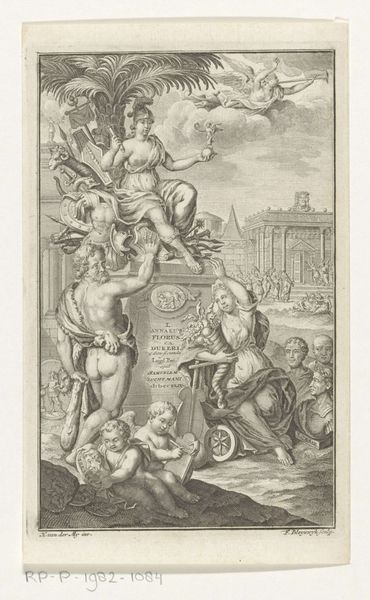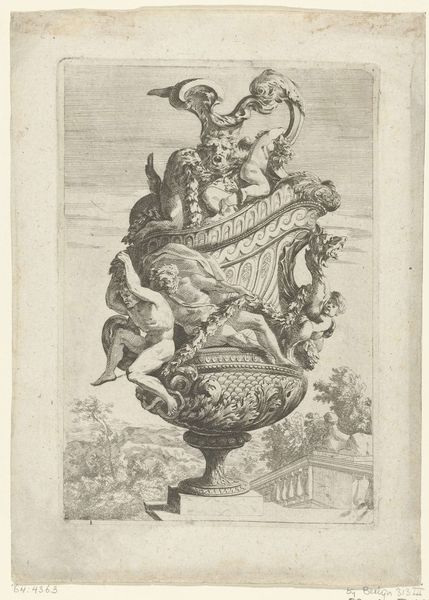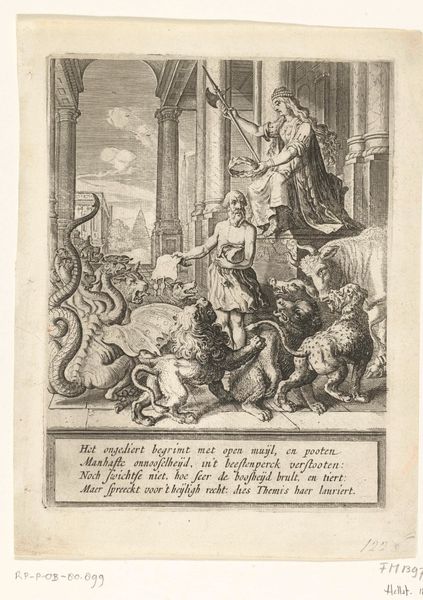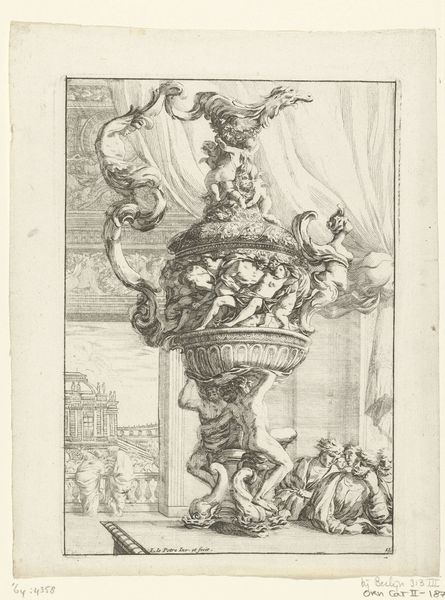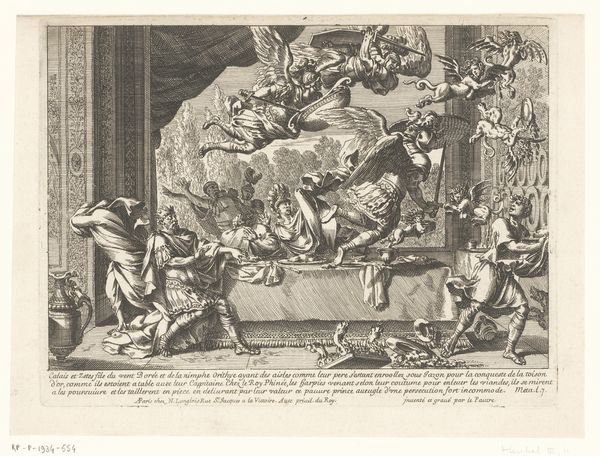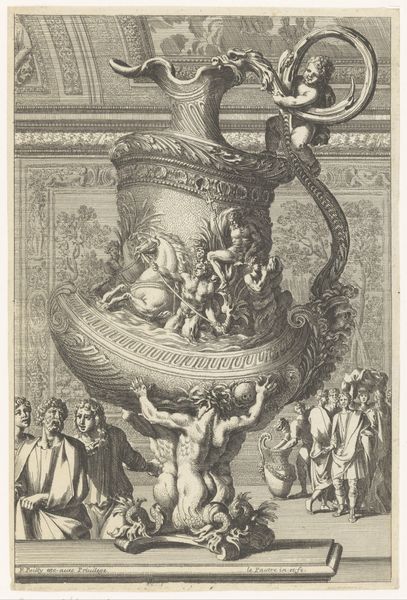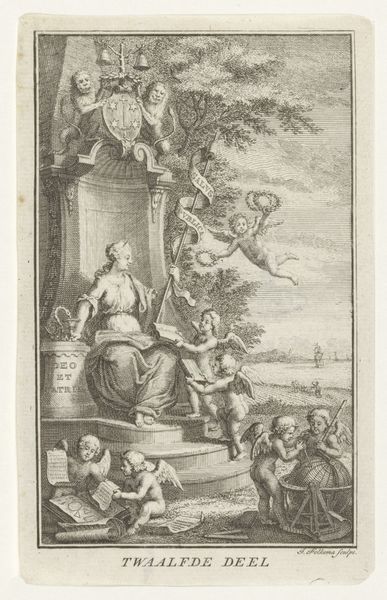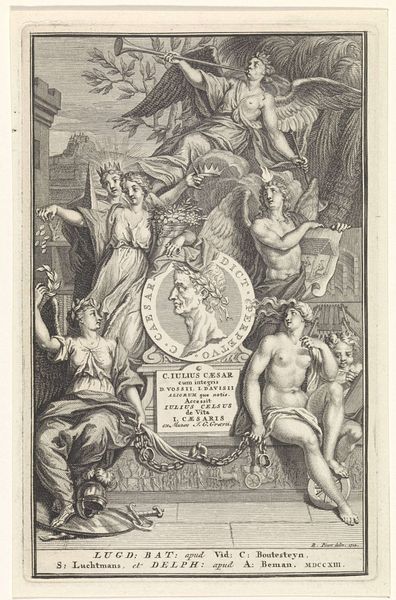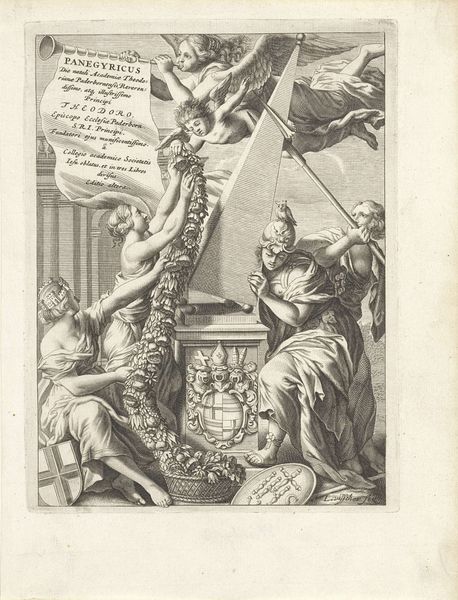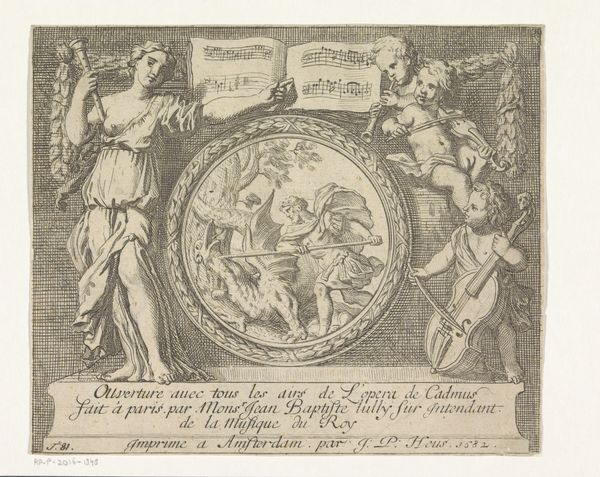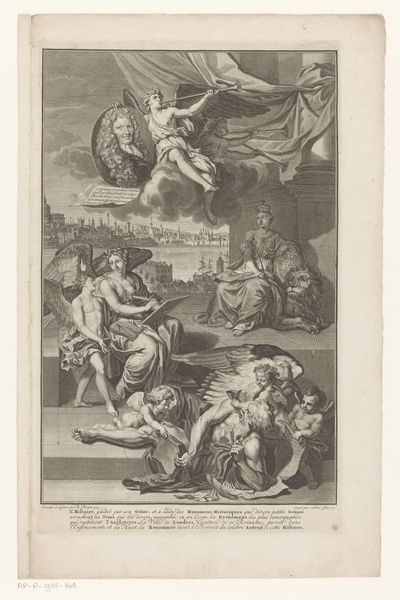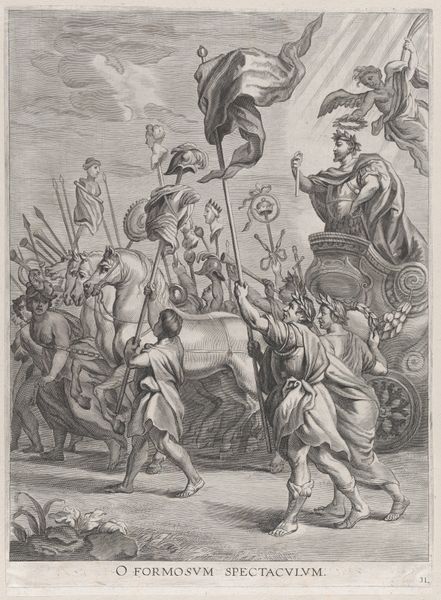
print, engraving
#
allegory
#
narrative-art
#
baroque
# print
#
old engraving style
#
figuration
#
line
#
history-painting
#
engraving
Dimensions: height 129 mm, width 90 mm
Copyright: Rijks Museum: Open Domain
Curator: Oh, my. This engraving is… well, let’s just say it's hitting me right in the solar plexus. A bit grim, no? All frantic lines and monstrous figures clawing at someone… Yeesh! Editor: That intense energy is definitely characteristic of Baroque art, though, isn't it? We're looking at Conrad Meyer's "Woekeraar en de Dood" from 1650, an allegorical work that visualizes a complex early modern understanding of morality, money and mortality. Curator: “The usurer and Death,” right? Now, I get it. He’s getting clobbered! Look at those grasping little devils. And Death with a bag of what, silver? gold? ready to bash the poor bloke. So over the top, so...theatrical. Editor: Meyer places this “woekeraar” - an old word for usurer - in a very specific historical and political context. The print is rife with iconography intended to address social anxieties around wealth accumulation and the spiritual dangers of avarice in 17th century Europe. See how the composition seems to suggest that unchecked financial greed could open one to the forces of evil or the sting of death, a literal strike to the head from a skeletal figure? Curator: Ah, yes, the cautionary tale. Easy to forget how relevant the sentiment is. That money is the root of all evil and all that. Still… It feels very dramatic, that idea of literally illustrating morals so boldly! Editor: Absolutely. And look how he emphasizes social commentary through the symbolic roles and relationships between figures in the image. In essence, Meyer critiques economic injustices through personifications of Vice, Death, and, of course, the usurer himself. Curator: It makes you wonder about Meyer himself. Did he truly believe the imagery, or was he making it… as theater, knowing it would move people and bring him attention? Is it personal, or is it… political? Editor: Both, maybe? I imagine Meyer saw the opportunity to influence viewers on multiple levels, addressing personal spirituality alongside anxieties around the changing economic structures. That makes him very much a figure of his time, connecting with his public using shared symbols and popular understandings. Curator: True. Even though this piece is almost 400 years old, that tussle with inner demons still hits home, doesn’t it? So dramatic, yet… honest. It makes me wonder what aspects of our society artists today will make monstrous... Editor: Well, I hope contemporary artists maintain Meyer's ability to incite thought and provoke a little necessary self-reflection, anyway. Thanks for sharing this one.
Comments
No comments
Be the first to comment and join the conversation on the ultimate creative platform.
